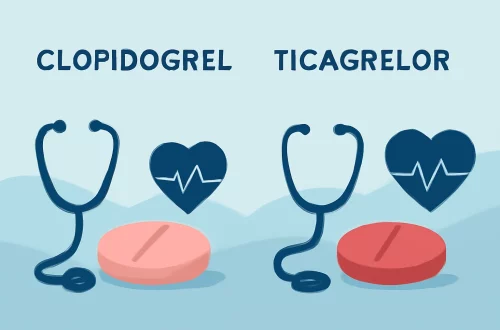-
Cymbalta vs Elavil: A Comprehensive Comparison of Two Antidepressants
Cymbalta and Elavil are two medications frequently prescribed for various mental health conditions, particularly depression and anxiety disorders. As the understanding of mental health evolves, so too do the treatment options available to patients. Cymbalta, generically known as duloxetine, is a serotonin-norepinephrine reuptake inhibitor (SNRI) that has gained popularity for its dual-action mechanism of targeting both serotonin and norepinephrine, neurotransmitters that play significant roles in mood regulation. On the other hand, Elavil, or amitriptyline, belongs to a class of medications known as tricyclic antidepressants (TCAs), which have been used for decades to treat depression, anxiety, and even chronic pain. Both medications have their unique profiles, side effects, and potential interactions,…
-
Citalopram vs Paxil: Understanding the Key Differences and Uses
Citalopram and Paxil are two medications frequently discussed in the context of mental health treatment, particularly for conditions such as depression and anxiety disorders. Both belong to a class of drugs known as selective serotonin reuptake inhibitors (SSRIs), which are designed to increase serotonin levels in the brain. This enhancement of serotonin activity is thought to improve mood and emotional balance. The choice between citalopram and Paxil often raises questions among patients and healthcare professionals alike, as each drug has its own unique profile of benefits and potential side effects. While both medications aim to alleviate symptoms of mental health disorders, they can differ significantly in their effectiveness, tolerability, and…
-
Ativan vs Seroquel: Comparing Uses, Benefits, and Side Effects
Ativan and Seroquel are two medications frequently prescribed for mental health conditions, each with distinct mechanisms of action and indications. Understanding the nuances of these drugs can be crucial for patients and healthcare providers alike. While both medications are utilized in the treatment of anxiety and mood disorders, they belong to different classes and have varying side effects, benefits, and risks. Ativan, generically known as lorazepam, is a benzodiazepine that primarily acts as an anxiolytic, providing rapid relief from anxiety symptoms. Seroquel, or quetiapine, is an atypical antipsychotic primarily used to manage conditions like schizophrenia and bipolar disorder. The differences in their pharmacological profiles can greatly influence treatment outcomes and…
-
Trazodone vs Xanax: Understanding Their Uses and Differences
Trazodone and Xanax are two medications that are often discussed in the context of mental health and wellness. Both have distinct properties and uses, which can sometimes lead to confusion among patients and caregivers alike. While they may both be prescribed to address similar symptoms, such as anxiety and depression, their mechanisms of action, side effects, and indications for use can be quite different. Understanding these differences is crucial for anyone considering treatment options, as well as for those supporting loved ones who may be navigating the complexities of mental health care. In an era where mental health awareness is growing, it is more important than ever to have a…
-
Finding Healing: The Power of Anxiety Depression Tattoos
Finding solace in art is a profound journey that many individuals embark on, particularly those grappling with anxiety and depression. The act of transforming emotional pain into visual expression fosters a unique healing process, allowing individuals to externalize their internal struggles in a meaningful way. Tattoos, often perceived as mere body art, can serve as powerful symbols of resilience, hope, and personal transformation. Each inked design tells a story, reflecting the wearer’s journey through mental health challenges, and offers a sense of empowerment and ownership over their narrative. As society becomes more open about discussing mental health, the stigma surrounding anxiety and depression diminishes. This cultural shift encourages individuals to…
-
Understanding the Reasons Behind Why You Feel Like Crap
Feeling down or unwell can often feel like an insurmountable obstacle. Many of us experience moments where we simply feel “off” or find ourselves in a persistent funk. These feelings can manifest in various ways, from emotional distress to physical discomfort. The complexity of our emotions and physical health can make it challenging to pinpoint the exact reasons for these feelings. Understanding why we sometimes feel this way is crucial for our overall well-being. The root causes can be multifaceted, often intertwining psychological factors, lifestyle choices, and even environmental influences. In a fast-paced world where stress is a constant companion, recognizing and addressing these feelings is not just beneficial; it’s…
-
Healing Ink: Tattoos as Expressions of Anxiety and Depression
Tattoos have long served as a canvas for self-expression, and in recent years, they have transcended their traditional aesthetic value to become powerful tools for emotional healing. For many individuals grappling with anxiety and depression, tattoos represent much more than mere body art; they embody personal stories, struggles, and triumphs. The ink on their skin tells tales of resilience, connection, and the journey toward mental well-being. In a society where mental health issues are often stigmatized, tattoos can serve as a visible reminder of one’s battles and victories. They can symbolize coping mechanisms, affirmations, or even memorials for lost loved ones. Each tattoo carries its own unique narrative, and for…
-
Can You Safely Take Xanax with Lexapro Together?
Xanax and Lexapro are two medications commonly prescribed to manage anxiety and depression, respectively. While both can be effective in treating their intended conditions, many patients find themselves wondering about the safety of taking these two drugs concurrently. This concern is valid, as both medications can have significant effects on the central nervous system. Understanding how they work individually and together is crucial for anyone considering their combined use. Xanax, generically known as alprazolam, is a benzodiazepine that acts as a sedative. It is typically prescribed for anxiety disorders, panic disorders, and sometimes for insomnia. Its primary function is to enhance the effects of a neurotransmitter in the brain called…






























